It is one hundred years this Monday since May 31, 1921, when the white Tulsa mob "systematized" their racist rage, "helping" to restore a social order according to the "will of God" to preserve the national purity and white supremacy. Discrimination of all kinds, in areas of residence, civil rights, employment, wages, education, sexual relations, marriage, services, sports, culture, and religion, used "separation" and led fatally to targeting of blacks, with the argument that any resistance of "non-whites" against a regime that with all "legitimacy" deprived them of almost everything had to be crushed.
The ruthless application of all this was not unknown to America in 1921, on the contrary, it had been deeply ingrained in the temper of the average white citizen since the creation of the American state. The institution of slavery may have been abolished in 1865, with the end of the American Civil War, but in that same year the Ku Klux Klan was founded, the infamous far-right organization that promoted the ideology of white supremacy, supporting racism, homophobia and anti-Semitism, through extreme acts of terrorism, violence and intimidation. Racial discrimination in the early 1920s was in the daily order and was evident in all aspects of the public life of black citizens.
Especially in the southern states, the legal framework was much stricter in its racist provisions, while in 1915 the second Ku Klux Klan was created, adopting from 1921 a new approach to recruiting its members, since it now used them as full-time "employees" at a regular salary, resulting in a skyrocketing growth of local organizations across America. In this historical context, in which the black community was suffocating, a small "miracle" had occurred in the city of Tulsa, in the state of Oklahoma. That miracle was the Greenwood area, a self-organized neighborhood in which about 11,000 blacks lived.
GREENWOOD'S "MIRACLE" IN TULSA
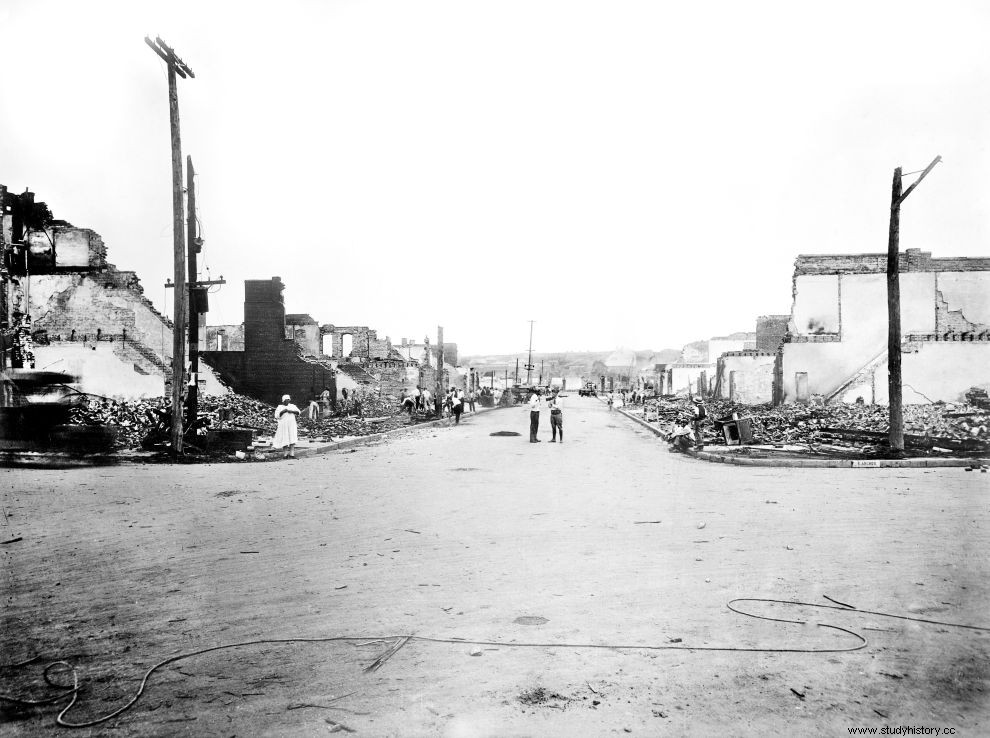
Tulsa was an oil-rich region - known at the time as America's "oil capital" - and this had given its residents the opportunity to reach an enviable - compared to the rest of the states - standard of living. The blacks had also taken advantage of this wealth, creating their own community, which developed into a model district, famous for its architecture, cleanliness, and intense business activity. Greenwood became so special that it was nicknamed "Black Wall Street" and the majority of its residents were educated urbanites:doctors, lawyers, businessmen, journalists, artists, etc.
There were more than 300 black-owned businesses:shops, medical offices, real estate offices, entertainment centers, theaters, cinemas, hair salons, art studios, two newspapers, many churches, etc. The fact that they were forbidden to associate with whites had "ghettoized" them. " in a sense the residents of Greenwood, but this did not seem to concern them particularly, since their quality of life was very high, in several cases even better than that of the whites. And this was the most important reason that caused the events of May 31, 1921, since the well-being of blacks quickly became the target of several Tulsa residents.
From contemporary accounts, we know that not all whites frowned upon the success of blacks, but throughout Oklahoma there was a very strong core of the Ku Klux Klan with more than 3,000 active members and many more sympathizers, just waiting to be given the reason - any reason - for them to take "action". And this occasion came on the evening of May 30, a day when Americans celebrated "Memorial Day" (a holiday dedicated to American citizens who lost their lives in military service). Due to the holiday, most shops were closed. At 4:00 p.m., 19-year-old African-American Dick Rowland, a polisher by trade and employee of a polishing shop, entered the "Drexel" building.
DICK ROWLAND AND THE HAND OF SARAH PAGE
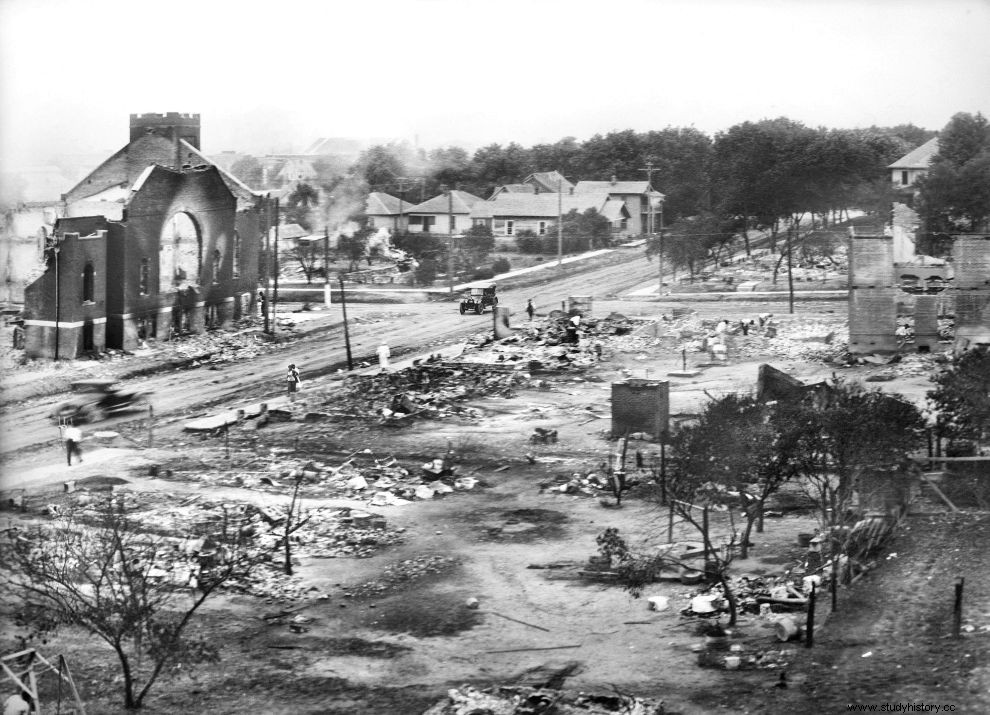
He headed for the only elevator to go up to the top floor where the restroom that blacks were allowed to use was located. There was 17-year-old white Sarah Page, an elevator operator, whom Rowland had met several times before and knew by sight. A few seconds later, an employee of a store located in "Drexel" heard what appeared to him to be a female scream and at the same time, saw a young black man running out of the building. He immediately went to the elevator, where he found Sarah Page upset and immediately called the police. But what had happened? It all boils down to the fact that Rowland, as soon as he entered the elevator, slipped and completely reflexively reached out to hold onto something.
Unwillingly, she was grabbed by Paige's hand, who was startled and screamed. Police took a statement from the girl, who clarified that Rowland had not assaulted her and that she did not intend to press charges. The police understood that it was basically a misunderstanding and limited themselves to sending a signal to find the young man and explain the incident, more for formal reasons. Meanwhile, Rowland, terrified of the possible repercussions, had taken refuge at his mother's home in Greenwood. The next morning (May 31st), two constables spotted Rowland on the street, arrested him, and took him to the Tulsa Detention Center.
The bottom line is that the whole thing would have ended there, without further "complications". Already, in the detention center, white lawyers who were there on various cases and who knew Rowland who often shined their shoes, were taking oaths that "this child cannot have attempted rape." The case seemed to be "closed," but that same afternoon, a local newspaper, the Tulsa Tribune, ran a front-page headline, "Negro Arrested for Attacking Girl in Elevator," completely distorting the events of the previous day. But worst of all was the front-page article titled "To lynch negro tonight," essentially urging the whites of Tulsa to lynch Rowland.
"TO LYNCH NEGRO TONIGHT"
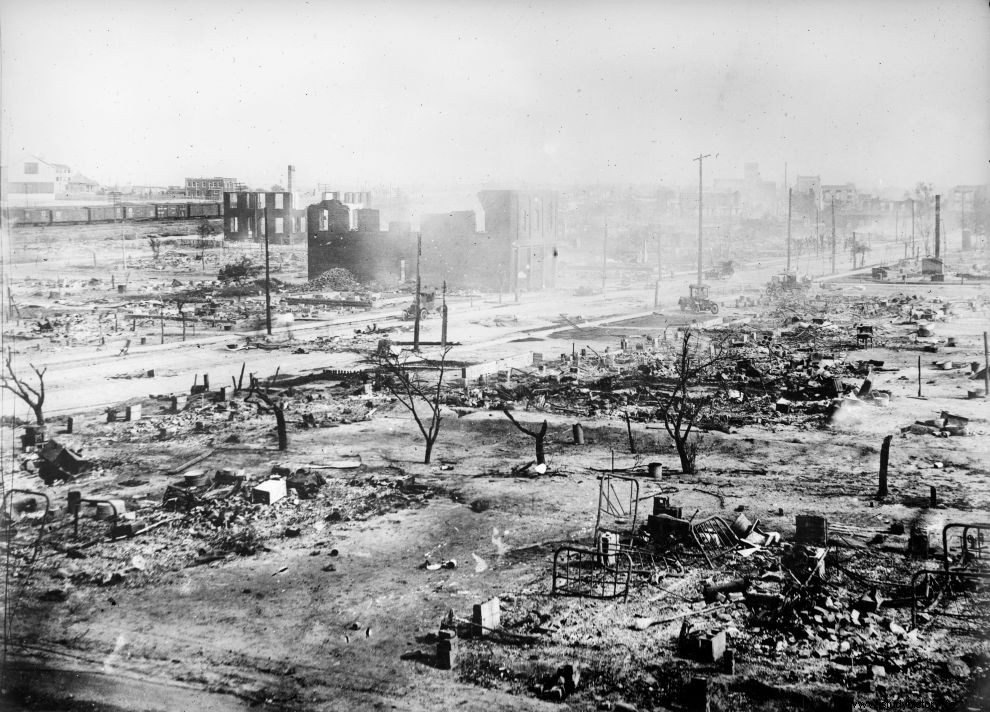
Word immediately spread through town and Sheriff Willard McCalla began receiving phone calls threatening the prisoner's life. McCalla immediately decided to take Rowland to the courthouse because he could better protect him there. The sheriff, after disabling the elevator (the detention center was on the first floor), placed six of his men on the roof of the building, as snipers, while the rest took up positions at the top of the stairs, with clear instructions to open fire against anyone who dared to approach. McCalla himself was outside the entrance of the palace, trying to calm the whites who had begun to gather in threatening moods.
McCalla was determined to avoid at all costs a repeat of what had happened a year earlier (under the previous sheriff), when another 19-year-old - a white man at that - who had been arrested for murder, had fallen into the hands of the mob, who had lynched him to death. The fact that several scores of enraged whites had gathered outside the courthouse, demanding that the sheriff hand Rowland over to them, became known in the Greenwood community, and a meeting was held at Gurley's Hotel, to decide on joint action so that protect the prisoner's life. Around 9:30 p.m., a group of 60 armed black men arrived at the courthouse.
McCalla tried to persuade them to leave, because he knew their presence would further enrage the more than a thousand assembled whites seeking revenge. Seeing the blacks' guns, most of the whites went home to arm themselves and returned to the courthouse. Some others headed to the National Guard armory, to get weapons from there, but to no avail, since the authorities had taken care in time to place armored guards, who had orders to shoot anyone who tried to enter. Meanwhile, the crowd outside the courthouse had already grown to over 2,000 angry - and armed - whites.
Small groups of blacks drove in cars near the courthouse, wanting to show that they were ready - if necessary - to defend Rowland. The whites began to believe that they were dealing with a "black uprising" and the tension rose with each passing minute. A short time later, another group of about 75 armed blacks arrived from Greenwood at the courthouse, asking to be placed under the orders of the sheriff, who refused. At one point, a white man demanded a black man hand over his gun, he refused, and then the white man fired the first shot. It was the breaking out of "hell". A fierce exchange of fire between whites and blacks immediately began, with the first dead lying on the road.
HELL BREAKS OUT
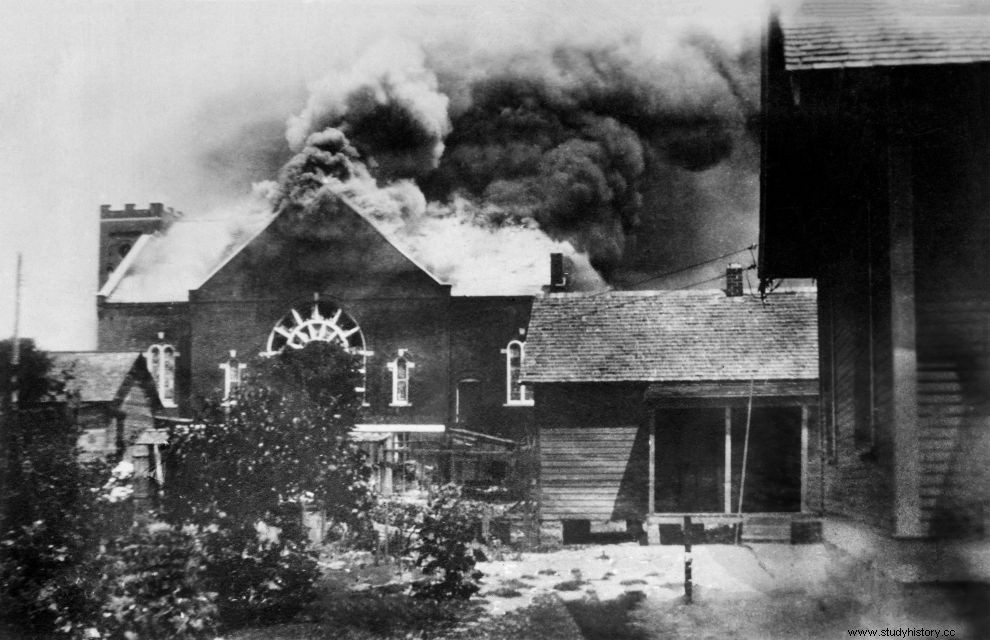
The first victims were ten whites and two blacks. After the first shots, the blacks began to retreat in an orderly fashion towards Greenwood. But the whites followed them, and entering the neighborhood of Greenwood, they began to destroy and plunder everything in front of them:houses, shops, churches, public buildings, everything. The mob also managed to break into gun shops, thus increasing its arsenal. At one point the "invaders" found themselves outside a cinema, from which people were leaving after the end of the screening. The whites opened fire indiscriminately against the unsuspecting crowd, amid an unprecedented panic, terror and many dead.
Such was the confusion that prevailed that the mob also killed some whites, while according to testimonies, there were policemen who gave weapons to the enraged invaders, telling them to "get a gun and get a nigger" ). Around 11 p.m., members of the National Guard gathered at the armory building to make a plan to stop the rioters. Groups of them had already taken over the guarding of the courthouse, the police station and other public services, while several forces had lined up at the points where Greenwood "bordered" with white districts, to prevent further incursions.
The National Guard had made hundreds of arrests of blacks, who were gathered in the city's Conference Hall. At one point, at midnight, a group of whites arrived outside the courthouse, chanting slogans in favor of lynching Rowland, but soon left, not daring to enter the building. Throughout the night and into the early hours of the morning, sporadic clashes continued, mainly along the border that separated the white and black mall. At one point word spread that many armed blacks were coming by train from neighboring Muskogee to reinforce their men at Greenwood.
GREENWOOD IN FLAMES
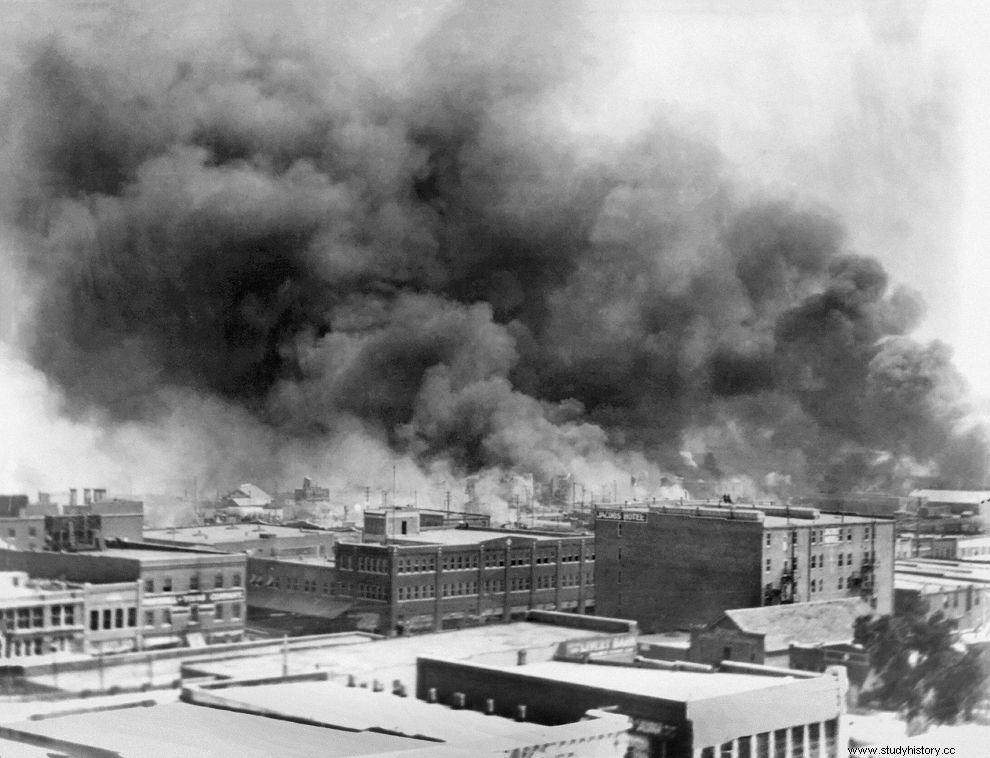
As a result, an unrelated train arriving at the Tulsa station was caught in a crossfire by the whites, forcing the passengers to lie on the floor for cover and safety. Meanwhile, throughout the morning, small groups of whites made continuous raids on Greenwood in cars, shooting indiscriminately at shops and houses. Blacks had placed snipers on building roofs, who in turn killed white invaders. Some of the mob, during the night, began to throw burning canvases soaked in oil into buildings, thus causing the first fires.
Several blacks, seeing the flames in the dark, began to fortify themselves in their homes, to defend their families and their properties with arms. But most of them preferred to leave Greenwood, to save themselves from the fury of the whites. Fire engines that rushed to put out the fires were forced to return to their base idle because the mob did not allow firefighters access to the burning buildings, threatening them with weapons. Some who tried to break the cordon were actually fired upon and naturally turned and fled. By 5 a.m. on June 1, about thirty black shops in Greenwood had already been reduced to ashes.
At that same time, the sound of a train siren was suddenly heard. Some whites thought it was the signal for the final, all-out attack on blacks. One of them came out of cover and was killed by a sniper. Immediately hundreds of whites left their hiding places and began an even larger invasion of Greenwood. A car containing five people was found at the head of the mob, but all the occupants were killed instantly by a burst of machine-gun fire. From then on, absolute panic prevailed. Many blacks tried to leave the area, but wherever the whites found them, they opened fire on them, with the number of victims now increasing dramatically.
Small "shock" teams entered the houses, forced the occupants out and set them on fire. The blacks were then sent to various detention centers. But most shocking of all, was the fact that white owners of at least a dozen private planes, took off from a nearby airport, shooting at point blank range with machine guns the blacks who were trying to leave their neighborhood in panic. But the white pilots did not limit themselves to shooting, but bombed Greenwood with improvised incendiary bombs containing turpentine and nitroglycerin. The fires had now spread throughout the district and were burning everything.
MARTIAL LAW IN TULSA
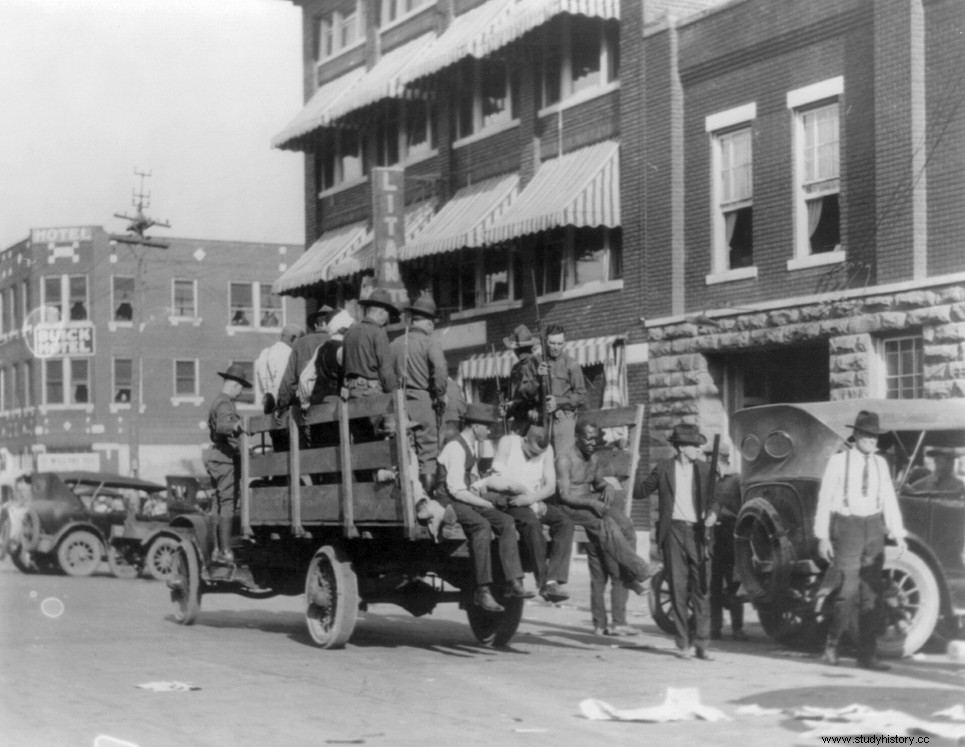
By the morning of June 1, the situation was so out of control that Oklahoma's governor ordered the state's National Guard major general, Charles Barrett, to rush forces from Oklahoma City to put an end to the Tulsa outbreak of violence. Barrett, on an emergency train, arrived in Tulsa, along with 109 soldiers, but he could not take action, since he was required by law to speak first with the local authorities of the city, namely the mayor, sheriff and police chief. By the time these meetings took place, even more reinforcements had been called in from other neighboring towns in the state.
At 12 noon Barrett declared martial law for all of Tulsa, and by afternoon the destruction and looting had stopped and order had been restored. Of the 11,000 residents of Greenwood, 6,000 were arrested and held pending an investigation of each of them. Several thousand fled the city, and most residents were left homeless, since when the riots stopped, Greenwood was literally leveled. The "Tulsa race massacre" ("Tulsa race massacre"), as it became known in America, was covered by the reports of national newspapers, but the numbers of victims differed greatly from each other.
At first, only white dead were reported, but as the days passed, blacks began to be added, but in numbers that were completely far from reality. The discrepancies were very large, but in the end the official number spoke of 36 dead, 26 blacks and 10 whites, which would change many decades later, but we will see this later in the text. Three days after the end of the tragic events of Tulsa, the president of the USA, Warren Harding, took a stand, even speaking to a black audience at Lincoln University in Pennsylvania:"Despite the demagogues, the idea of our unity as Americans, stands higher than any social class or group. I hope the same will happen to our national race problem. God grant we may never see such a sight again."
ΣΑΝ ΝΑ ΜΗ ΣΥΝΕΒΗ ΤΙΠΟΤΑ...
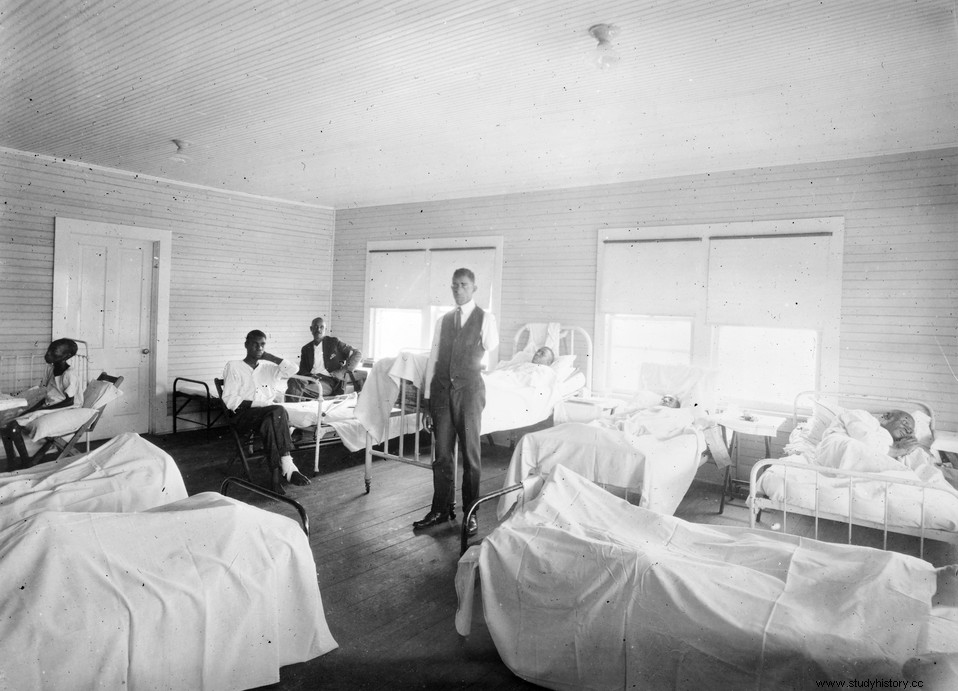
Για τα όσα συνέβησαν στο Γκρίνγουντ, ποτέ δεν αποδόθηκαν ποινικές ευθύνες. Υπήρξε μια έρευνα για να βρεθούν οι υπαίτιοι, όμως αυτή διενεργήθηκε περισσότερο για τα μάτια του κόσμου και δεν είχε κανένα ουσιαστικό αποτέλεσμα, αφού κανείς δεν καταδικάστηκε, σαν να μην είχε συμβεί απολύτως τίποτα. Για πολλές δεκαετίες το μόνο που σχετίστηκε με τη σφαγή της Τούλσα, ήταν η σιωπή γύρω από τη βία, τον τρόμο και τον θάνατο. Το 1996, λίγο πριν τη συμπλήρωση 75 χρόνων από την τραγωδία, η αμερικανική κυβέρνηση εξουσιοδότησε μια Επιτροπή από την Οκλαχόμα, να διερευνήσει τα γεγονότα του 1921, διορίζοντας ανεξάρτητους ερευνητές, οι οποίοι θα έπρεπε να συντάξουν μια ολοκληρωμένη έκθεση σχετικά με τα όσα είχαν συμβεί στο Γκρίνγουντ.
Η Επιτροπή έδωσε στη δημοσιότητα το πόρισμά της τον Φεβρουάριο του 2001. Μέσα σε αυτό αναφέρονταν τα εξής:191 καταστήματα και επιχειρήσεις, ένα δημοτικό σχολείο, επτά εκκλησίες και το μοναδικό νοσοκομείο της περιοχής, είχαν καταστραφεί. 1256 σπίτια είχαν καεί ολοσχερώς, ενώ 215 ακόμη είχαν λεηλατηθεί χωρίς όμως να καούν. Οι ζημιές υπολογίστηκαν σε 2.250.000 δολάρια της εποχής (33 εκ. σημερινά δολάρια). Η Επιτροπή πρότεινε στην κυβέρνηση α) να αποζημιωθούν οι επιζώντες της σφαγής, β) να αποζημιωθούν οι απόγονοι των θυμάτων, γ) να διατεθεί μια υποτροφία για φοιτητές που επηρεάστηκαν από τη σφαγή, δ) να δημιουργηθεί μια ζώνη επιχειρήσεων οικονομικής ανάπτυξης στο ιστορικό κέντρο του Γκρίνγουντ και ε) να αναγερθεί ένα μνημείο στη μνήμη των θυμάτων.
Τελικά τίποτα από όλα αυτά δεν έγινε, πέρα από κάποιες τυπικές τελετές, στις οποίες τιμήθηκαν με αναμνηστικά μετάλλια, οι 118 επιζώντες της σφαγής (βαριά τραυματισμένοι στη διάρκεια των ταραχών). Αυτό που ποτέ δεν έγινε γνωστό, ήταν ο ακριβής αριθμός των νεκρών. Η Επιτροπή κατέληξε ότι αυτοί κυμαίνονταν μεταξύ 75 και 300 (επιβεβαιώθηκαν μόνο 39 θάνατοι, 26 μαύρων και 13 λευκών) ενώ έξω από νεκροταφείο της περιοχής ανακαλύφθηκε ένας μαζικός τάφος με πολλά πτώματα, πεταμένα το ένα πάνω στο άλλο. Ο Ερυθρός Σταυρός, τον Δεκέμβριο του 1921, είχε κάνει λόγο για 10.000 άστεγους και ήταν η μοναδική υπηρεσία που στάθηκε δίπλα στους μαύρους του Γκρίνγουντ, προσφέροντας τη βοήθειά του για την προσωρινή διαμονή, σίτιση και περίθαλψη των κατοίκων, αλλά και για την ανοικοδόμηση της συνοικίας.
ΕΚΑΤΟ ΧΡΟΝΙΑ ΜΕΤΑ ΤΗ ΣΦΑΓΗ ΤΗΣ ΤΟΥΛΣΑ
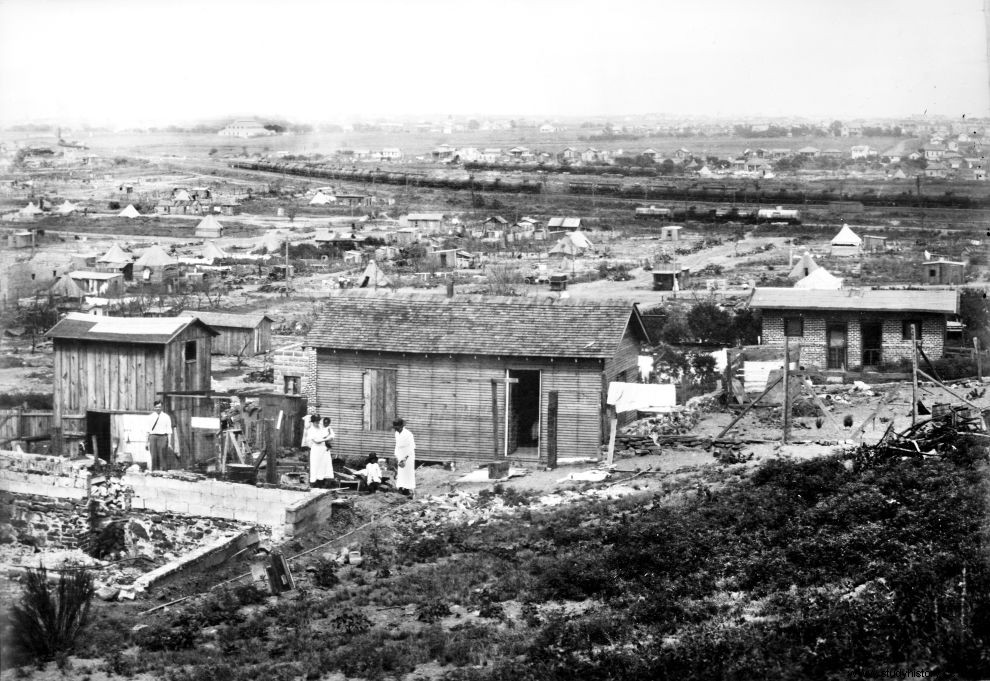
Ο Ντικ Ρόουλαντ απαλλάχθηκε από όλες τις κατηγορίες τον Σεπτέμβριο του 1921 και αμέσως εγκατέλειψε για πάντα την Τούλσα, μετακομίζοντας στο Κάνσας Σίτι. Έκτοτε κανείς δεν έμαθε τίποτα για αυτόν. Το σίγουρο είναι ότι έναν αιώνα μετά, η σφαγή της Τούλσα παραμένει ένα μελανό στίγμα στην ιστορία των Ηνωμένων Πολιτειών, "σφραγισμένο" από αθώους μαύρους που δολοφονήθηκαν, κρεμάστηκαν, κακοποιήθηκαν, βασανίστηκαν, βιάστηκαν, λιντσαρίστικαν, κάηκαν ζωντανοί, με μόνο τους "έγκλημα" το υψηλό βιοτικό τους επίπεδο σε μια συνοικία-υπόδειγμα, την οποία φρόντισαν να δημιουργήσουν οι ίδιοι από το μηδέν με πολύ κόπο και ιδρώτα, μέσα σε ένα κοινωνικό πλαίσιο που χαρακτηριζόταν από μίσος, ρατσισμό και ανεξέλεγκτη βία.
Σήμερα, εκατό χρόνια μετά τη θλιβερή επέτειο, η σύγχρονη Αμερική συνεχίζει να "ξερνάει" ρατσιστικό μένος σε όλα τα επίπεδα, από τις επίσημες υπηρεσίες της μέχρι τους απλούς καθημερινούς πολίτες, από την αστυνομία μέχρι τον κάθε ποτισμένο με φανατισμό ψυχασθενή, συντηρώντας μια από τις χειρότερες "παραδόσεις" της χώρας, μια παράδοση που αντιστέκεται ακόμα στα οικουμενικά δικαιώματα του ανθρώπου και περιφρονεί κάθε αξία ισότητας και ισονομίας. Τα θύματα της καταστολής και της αυθαιρεσίας, κρατικής ή μη, δεν έχουν σταματήσει δυστυχώς να γεμίζουν τον ατελείωτο κατάλογο των νεκρών που στο "βωμό" μιας σαλεμένης ιδέας περί ανωτερότητας της λευκής φυλής, βλέπουν τους θύτες τους να παίρνουν τα όπλα και να "καθαρίζουν", ή μάλλον πιο σωστά, να καθορίζουν τις ζωές των άλλων.
